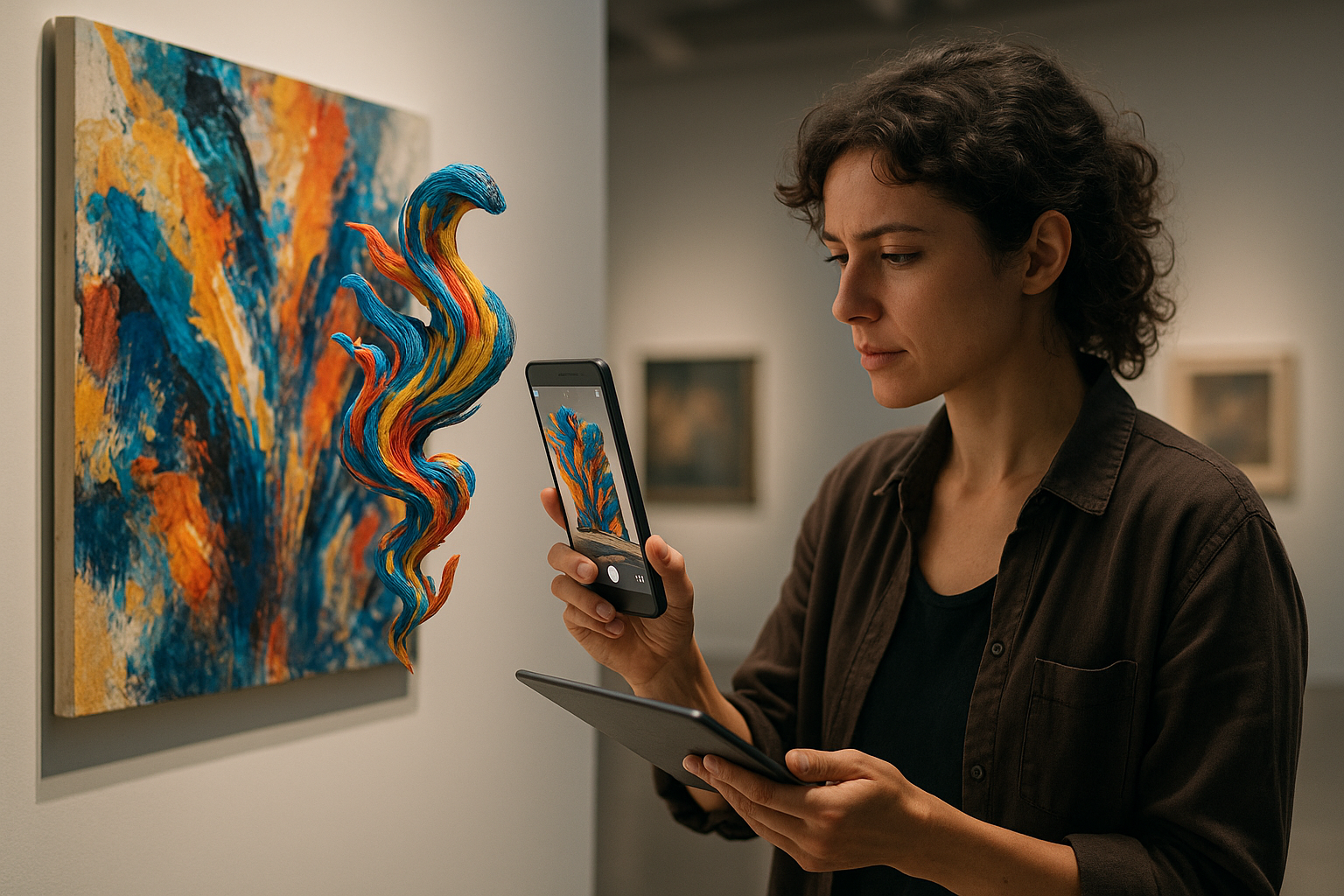Intriguing Interplay: How Augmented Reality Shapes Modern Art
Introduction: In a rapidly digitizing world, the intersection of technology and art is a fascinating realm worth delving into. Augmented Reality (AR) is at the forefront, revolutionizing the art scene and redefining our interaction with creativity. Let's explore this captivating convergence.

An Overview: Augmented Reality in Art
Augmented Reality is not a novel concept. Its roots date back to the 1960s with the development of the first head-mounted display system for immersive simulation. However, it has recently found a new home in the realm of art, bringing a fresh perspective and endless possibilities. AR integrates digital information with our physical environment, enabling artists to create dynamic, interactive pieces that bridge the gap between the virtual and real world.
Current Advancements: The Digital Art Revolution
The application of AR in art is a burgeoning field with exciting developments. Renowned museums such as the Louvre and the Smithsonian have embraced AR to enhance visitor experiences and engage with younger, tech-savvy audiences. Meanwhile, innovative artists like Marina Abramović and Zach Lieberman are using AR to create immersive, interactive art installations.
Impact and Significance: Redefining Artistic Expression
AR’s impact on the art world is profound. It has transformed the way art is created, viewed, and experienced, providing a platform for artists to push boundaries and challenge conventional wisdom. AR allows for the creation of art that transcends physical limitations, offering a multi-sensory experience that engages audiences on a whole new level. Furthermore, it democratizes art, making it accessible to a broader audience through smartphones and tablets.
Reception: Embracing the Augmented Art Movement
The reception of AR in the art world has been largely positive. Critics praise its potential to revolutionize the art scene, while audiences appreciate the immersive, interactive nature of AR installations. However, as with any significant shift, there is resistance. Some traditionalists question whether technology-enhanced art can truly match the depth and soul of handcrafted pieces.
Looking Forward: The Future of AR in Art
Despite its critics, the future of AR in the art world looks promising. As technology continues to evolve, artists will have an increasing array of tools at their disposal to create even more immersive, interactive experiences. Moreover, as AR becomes more mainstream, we can expect to see it more widely adopted in museums, galleries, and public art installations.
In conclusion, the introduction of Augmented Reality into the art world has sparked a revolution. It has challenged artists to think outside the box, pushed boundaries in creative expression, and redefined how audiences interact with art. While this is a significant departure from traditional artistic practices, the possibilities are endless, and the future looks bright for this intriguing interplay of technology and art.




